The Valley Citizen is proud to feature Jim Gain’s series, “Learn 100 Common Valley Birds,” a guide to the most common birds in the San Joaquin Valley. Daunting as it may seem, most people can learn to recognize 100 species if they enjoy going outdoors and developing a closer relationship with nature. Even getting to know 25 species is more than worth the effort. Learning the birds both heightens the senses and enhances one’s appreciation for life on earth. Below, Jim’s Valley gull trifecta. See more of Jim’s fine work here. ed
Gulls in the Valley? Ordinarily, we associate gulls with the seashore, hence, “seagulls.” Actually, gulls can show up most anywhere, including the San Joaquin Valley. Because they have different plumages at different ages until they reach adulthood, gulls are notoriously difficult to identify. For the beginning birder, a few rules of thumb make it much easier to identify common Valley Gulls.
Rule 1: The rule of probability
The most common Valley gull is the California Gull. So if you see a gull, the probability is that it’s a California Gull; the second most common is the Herring Gull. The third most likely gull you will see is the Ring-billed Gull. Use the rule of probability to look for characteristics of the more common gulls. (Keep in mind you may sometimes see flocks of Bonaparte’s Gulls, even though they are uncommon). Also remember there are many other gull species in the Valley but they are not as common as the big three.
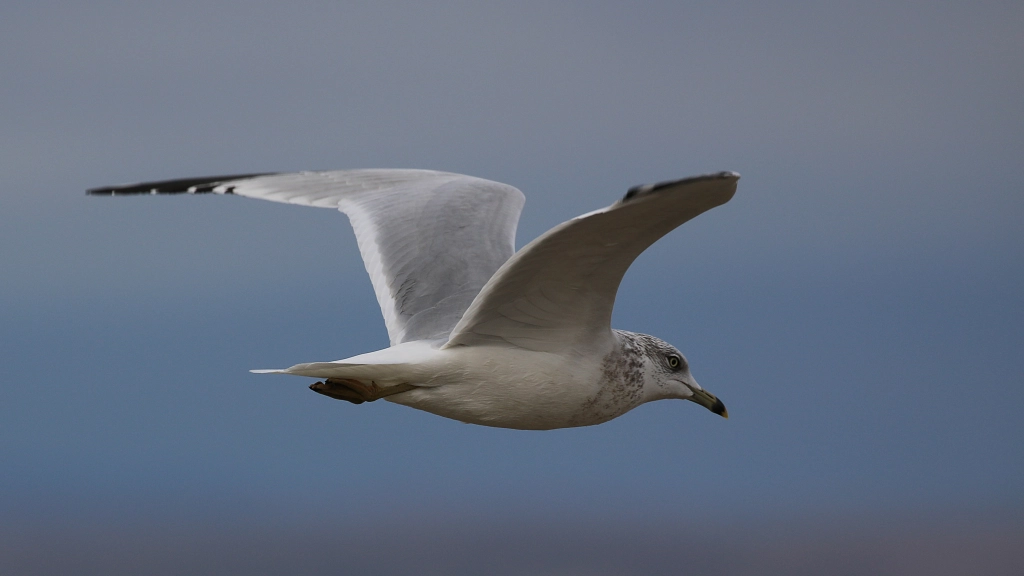
Rule 2: Focus on adults
Beginners can avoid the nightmare of gull age plumages by learning adults first. Unless you develop the intense birder’s obsessive need to know every bird you see, you can learn immature plumages slowly or not at all. There are plenty of adults around; when you learn to recognize them by size and shape, you may be able to apply those characteristics to many of the immatures as well.
Rule 3: Simplify
The three most common Valley gulls can be separated by size and color. The largest of the three is the Herring Gull. It has a pale mantle (back) and pink legs. The smallest of the three is the Ring-billed Gull. It also has a pale mantle, but the legs are yellow. Intermediate in size between the Herring Gull and Ring-billed Gull, the California Gull has a darker mantle than either of the other two. Its legs sometimes look yellow and can even look grayish, but almost always appear yellowish or yellow greenish rather than the bright yellow of the Ring-billed Gull.
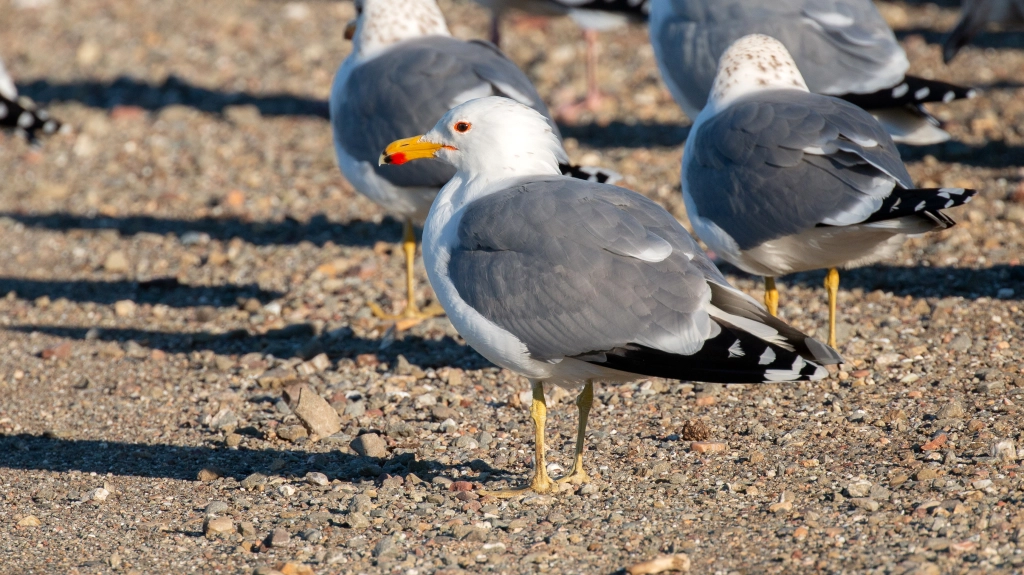
Keep in mind the maddening reality is that California Gulls vary greatly within the species and leg color can cover a wide range. The point is that if you see a large gull, medium-sized gull and small gull together in the San Joaquin Valley, odds are you are looking at a Herring, California and Ring-billed Gull. Mantle color can vary according to light, but the California Gull has a distinctly darker mantle than the other two. Also keep in mind that if you see a flock of small, twinkly-winged gulls and some of them have black hoods on their heads, you are most likely looking at Bonaparte’s Gulls. Yes, it can be confusing sometimes, but a short excursion into immature and sub-adult plumages will make you love the simplicity of size, mantle and leg color for identifying adult gulls — immature gulls often drive even experienced birders to despair. Remember, these rules of thumb apply here in the Valley. The coast is an altogether different story.
Jim Gain’s excellent photography will always help you sort things out. Here is the gull trifecta— Ring-billed, California, and Herring — from Jim’s excellent series, “Learn 100 Valley Birds.”
Ring-billed Gull: Species #52/100
The Ring-billed Gull (Larus delawarensis) is a medium-sized gull. Its head, neck and underparts are white; the relatively short bill is yellow with a dark ring; the back and wings are silver gray; and the legs are yellow. The eyes are yellow with red rims. The basic plumage (non-breeding/winter) adult’s head has a mottled look to it.
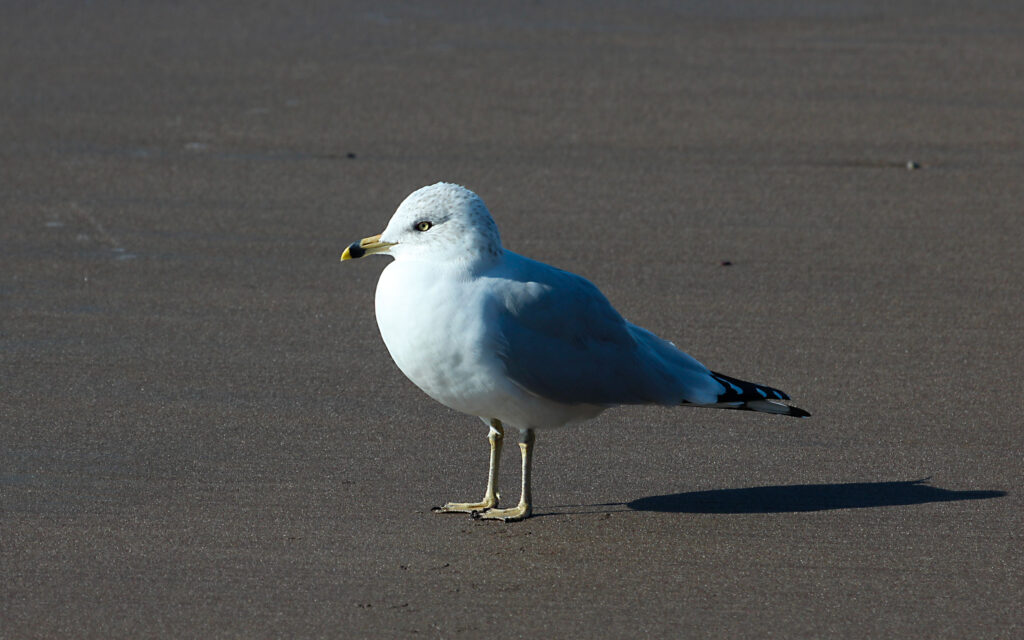
The Ring-billed Gull takes three years to reach full adult plumage. The first two year’s plumages have a very mottled, almost dirty look to them and their bills have a black tip rather than a black ring.
The Ring-billed Gull is most prevalent between July and April at almost any areas with water and/or human activity.
California Gull: Species 53/100
Adults are similar in appearance to the Herring Gull, but have a smaller yellow bill with a black ring, yellow legs, brown eyes and a more rounded head. The body is mainly white with grey back and upper wings. They have black primaries with white tips.
Made famous by the Morman, *”Miracle of the Gulls,” the California Gull is a common winter visitor with a few non-breeding adults hanging around through the summer.
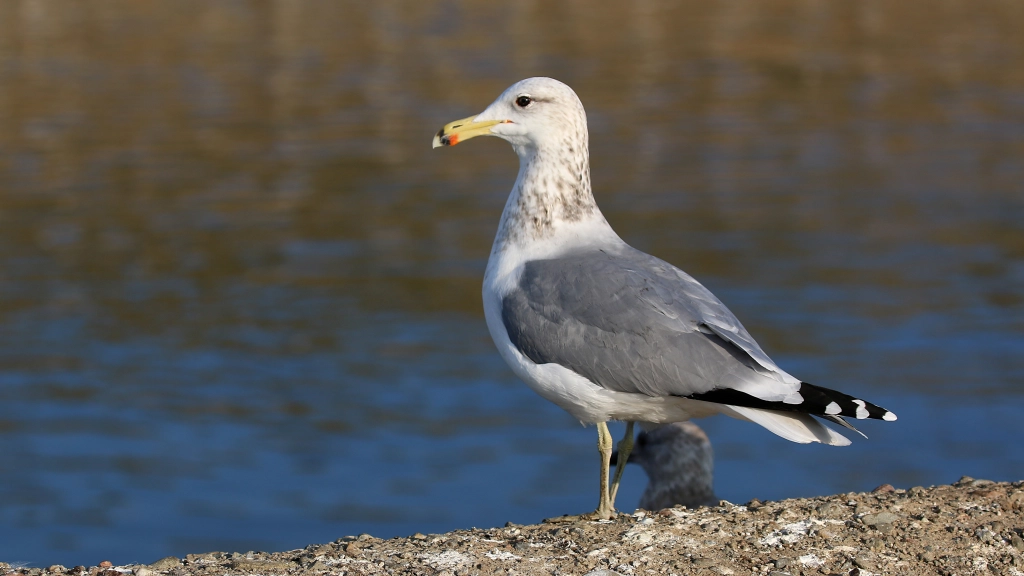
*MIRACLE OF THE GULLS STORY
The traditional story is that the “seagulls” (California Gulls) miraculously saved the Mormon pioneers’ second harvest in 1848 in the Salt Lake Valley by eating thousands of crickets that were devouring their fields. For this reason, Seagull Monument was erected and the California gull became the state bird of Utah.
Herring Gull: Species 54/
Herring Gull adults are white with a gray back and wings, black wingtips with white spots, and pink legs. Young birds take four years to reach fully adult plumage. During this time they go through several plumage stages and can be very variable in appearance.
Along with the other two gulls featured in the previous two posts, the Herring Gull can frequently be found around schools and shopping centers looking for an easy meal from the generally sloppy humans.
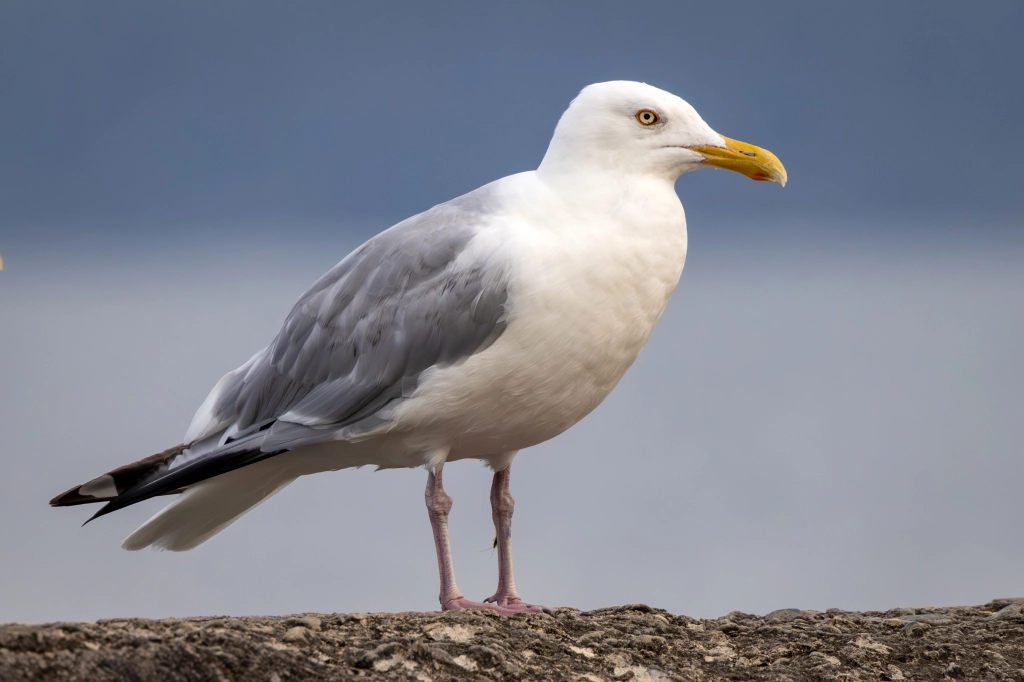
The taxonomy of the herring gull group is very complicated and much is still controversial and uncertain. It is widely accepted however, that this global species should be split into three separate species; the American Herring Gull, the European Herring Gull and the Vega Gull.


[…] Story continues […]
Quite an interesting true story about the gulls saving a harvest for a well known group in the 1800s. I will not ruin the story for any one else. Made excellent reading.
Thank you, Jim Gain
[…] Story continues […]